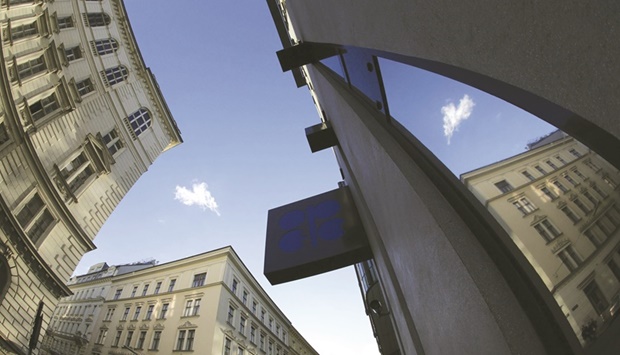The Opec+ group of oil exporters are set to hammer out a new strategy at their meeting on Wednesday, with all eyes on how they will react to soaring crude prices.
The 13 core members of Opec, led by Saudi Arabia, and the 10 further states in Opec+ — chief among them Russia — find themselves at a crossroads.
After the drastic output cuts they agreed to in spring 2020 in reaction to the plunge in demand caused by the coronavirus pandemic, the member states of the alliance are once again producing at pre-virus levels — at least on paper.
In normal times they would perhaps have stopped at that but faced with runaway prices and pressure from Washington, this scenario is viewed as unlikely.
US President Joe Biden travelled to Saudi Arabia in mid-July. Part of the reason for the trip was to convince Riyadh to continue loosening the production taps to stabilise the market and curb rampant inflation.
Wednesday’s meeting will reveal whether his efforts were successful.
“The US administration appears to be anticipating some good news but it’s hard to know whether that’s based on assurances during Biden’s trip or not,” Craig Erlam, analyst at Oanda, told AFP.
“It wouldn’t be a surprise to see the Saudis announce something that Biden could tout as a win to voters at home,” according to Stephen Innes of SPI Asset Management.
According to the London-based research institute Energy Aspects, Opec+ could adjust its current agreement in order to keep raising crude production volumes. However, analysts warn against expecting any drastic increases.
Opec+ has to take into account the fact that the interests of Russia — a key player in the alliance — are diametrically opposed to those of Washington.
“Saudi Arabia has to walk a fine line,” says Tamas Varga, analyst at PVM Energy. The task will be to allow the United States to save face while also placating Moscow in order to ensure the stability of the alliance.
Any decision on Wednesday will have to be unanimous, which may lead to a longer meeting than normal. The videoconference meeting is due to start at around 1300 GMT on Wednesday (or 3pm at the cartel’s Vienna headquarters). “Any new Opec+ deal aimed at further ramping up supplies is likely to be met with market scepticism, considering the supply constraints already evident within the alliance,” says Han Tan at Exinity.
The alliance already regularly fails to fill the production quotas already allotted and has struggled to get back to pre-pandemic volumes.
Opec output rises: Opec pumped an extra 310,000 barrels of oil per day in July as rising supply from the Gulf offset outages in Nigeria and Libya, a Reuters survey showed on Monday, with members delivering nearly 60% of an output hike pledged under a deal with allies. The Organisation of the Petroleum Exporting Countries (Opec) pumped 28.98mn barrels per day (bpd) of crude last month, the survey found, up 310,000 bpd from June’s revised total.
Some 240,000 bpd of that increase came from the 10 Opec producers who had signed up to agreement between Opec and allies led by Russia – a group known as Opec+ – in which they had pledged to boost output by an extra 412,000 bpd.
Opec+ is unwinding 2020 output cuts made due to the pandemic, though many are struggling to deliver the full volumes. The deal called for a 648,000 bpd increase in July from all Opec+ members, including the 412,000 bpd from Opec signatories. Another increase in output is not expected when Opec+ meets on Wednesday. “The meeting is not likely to see a surprise outcome in terms of a production hike,” an Opec+ source said.
Output has undershot pledged hikes between October and June, with the exception of February, according to Reuters surveys, as many producers lack the capacity to pump more due to insufficient Investment, a trend accelerated by the pandemic.
As a result, the 10 Opec members are pumping far less than called for. Output undershot the July target by 1.3mn bpd, the survey found, and compliance with the remaining pledged cuts was 418%, up from 253% in June.
The biggest increase in production, of 150,000 bpd, came from top exporter Saudi Arabia, the survey found, although the kingdom continued to pump less than its target.
Output in Libya, which dropped sharply due to unrest in June, posted a slow recovery and by the end of the month had recovered to normal levels. Libya is one of the members exempt from making voluntary cuts.
The United Arab Emirates and Kuwait boosted supply largely in line with their quotas, while Iraqi output edged higher.
The biggest decline, of 70,000 bpd, came from Nigeria, where outages and maintenance curbed output. Production in Iran and Venezuela, the other two exempt producers, was steady.
The Reuters survey aims to track supply to the market. It is based on shipping data provided by external sources, Refinitiv Eikon flows data, information from tanker trackers such as Petro-Logistics, and information provided by sources at Oil companies, Opec and consultants.

